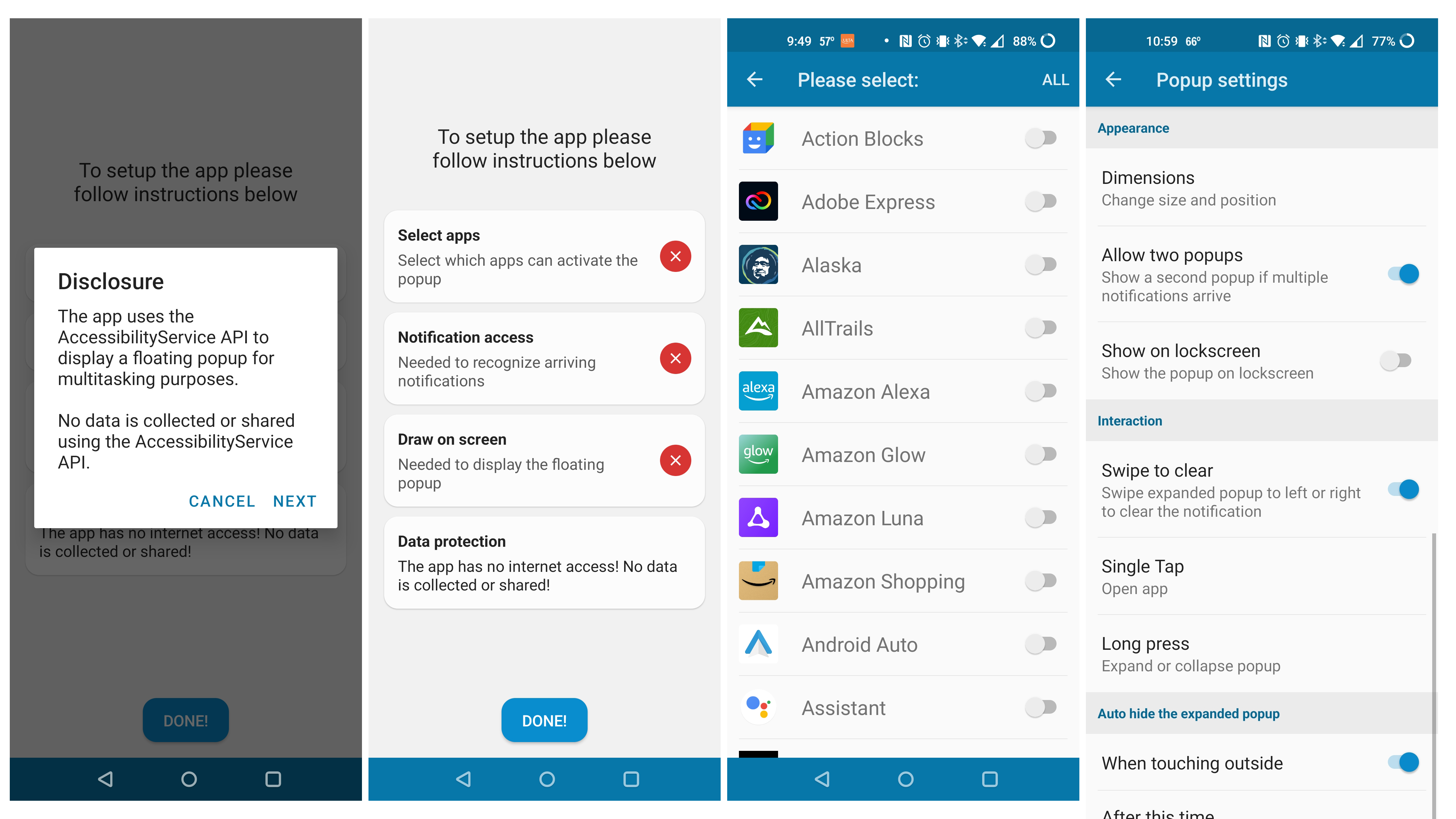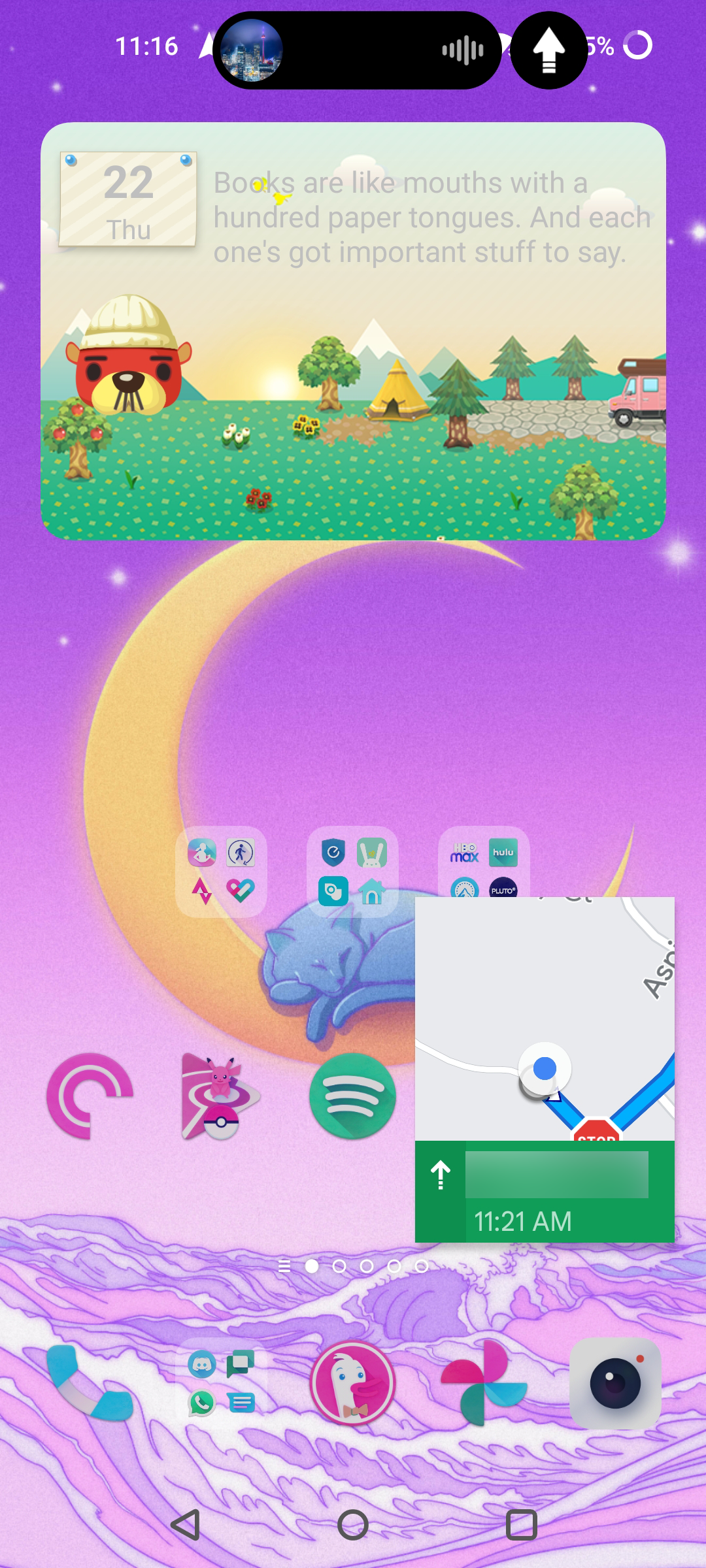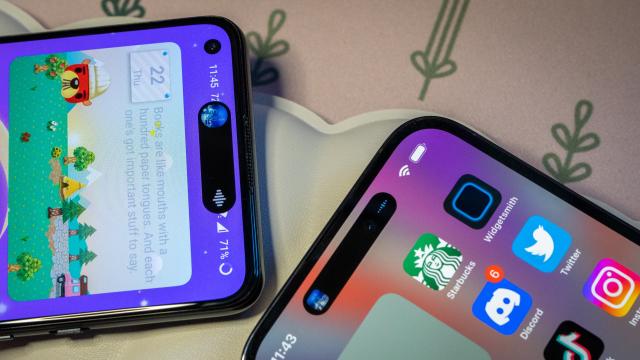It bears repeating that trying to emulate an iOS feature that isn’t native to Android often results in something too hacky to use daily. That’s how I feel about a new attempt to bring Apple’s dynamic island iPhone feature to Android.
The app that lets you do this is called dynamicSpot, and it’s making the rounds on the Android blogs as a way to re-create the iPhone 14 Pro’s new ability. The Dynamic Island is the area on the iPhone 14 Pro that houses the front-facing camera and the Face ID sensor. To make use of dead space, Apple implemented a software trick to give that space some purpose. Now it exists as a multitasking menu of sorts. iPhone 14 Pro users see general phone alerts, live activities, and any app that uses the Now Playing API within that tiny pill-shaped area at the top of the screen. They can tap to expand it or leave it minimized.
Android doesn’t do this. Instead, it uses the notification shade to hide things like media playback controls. Like on iPhone, dynamicSpot aims to bring the Dynamic Island’s functionality to all Android devices as a way to hide camera notch space, but the effect doesn’t work if you’ve got a selfie cam off to the side, and is arguably unnecessary if your camera is under the screen or is a small hole punch.

DynamicSpot is free in the Play store, or you can pay $US5 ($7) for the ability to use the app on the lock screen. Like the iOS feature, the app is categorised as a multitasking tool. Before it installs, you’ll have to select which apps work with it and then allow full accessibility controls. The app will walk you through onboarding.

I set up dynamicSpot on the OnePlus 9 to test it out. While the app is, predictably, not as smooth as my experience with the iPhone 14 Pro/Pro Max, it manages to get the gist across. When you minimise an app, it will shrink down to the area as it would on an iPhone. However, it’s less animated, immediately revealing it as a third-party app attempting to be something it’s not. Also, the hole-punch camera on the OnePlus 9 is on the left side of the screen, and there was no option to move the app module over to look at home with it.
I couldn’t try dynamicSpot with a ride-sharing app or voice call, but I did try it out with Spotify and a Google Maps navigation session. It’s a little redundant if you have an app already using the picture-in-picture API, as Maps does. The result was three pop-ups on my home screen, which made the interface look crowded. When you want to rid yourself of the Dynamic Island-like feature, you’ll have to manually end the app task to file it away, which is a little annoying.
I like the feature as a way to pin an app that’s working in the background. It’s easier than expanding the notification shade by swiping down from the top. But, aesthetically, it clashes with everything else, which is not the case with the Dynamic Island on the iPhone 14 Pro.
The fun part of being an Android user is getting into nonsense like this. If you’re curious enough to try out the feature, you can grab it from the Play Store. I still haven’t decided if I’m going to keep it installed or not. The app is a beta, which means it’s likely to get refined over time.
